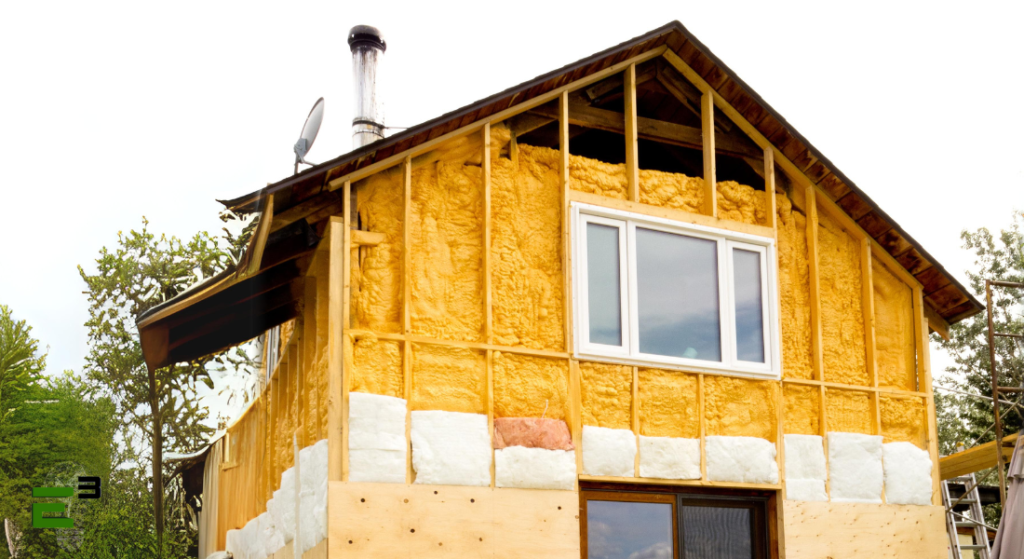As energy costs rise and environmental concerns become more pressing, retrofitting older homes for energy efficiency has never been more important. Whether you’re looking to reduce your energy bills, increase your home’s comfort, or minimize your carbon footprint, upgrading an older home to be more energy-efficient is a smart investment. Here’s a comprehensive guide to help you get started.

Understanding the Basics of Retrofitting
Retrofitting involves making modifications to an existing building to improve its energy performance. Older homes, often built before modern energy standards were established, typically have numerous areas where energy efficiency can be improved. The key areas to focus on are insulation, windows and doors, heating and cooling systems, and lighting.
Retrofitting Older Homes for Energy Efficiency: A Comprehensive Guide
Retrofitting older homes for energy efficiency is not only beneficial for the environment but also for your wallet. Older homes often come with charm and character, but they also tend to be less energy-efficient than modern builds. Here’s a comprehensive guide to upgrading your older home, making it more energy-efficient without compromising its unique charm.
1. Start with a Home Energy Audit
Before making any changes, it’s essential to understand where your home is losing energy. A home energy audit can identify problem areas and provide a roadmap for improvements. You can either hire a professional or conduct a basic audit yourself. Look for drafts, check insulation levels, and inspect heating and cooling systems.
2. Seal and Insulate
One of the most effective ways to improve energy efficiency is to seal and insulate your home. Older homes often have gaps and cracks that let warm air out in the winter and cool air out in the summer. Here are some key areas to address:
– Attic and Roof: Ensure your attic is well-insulated and check for any gaps in the roof that might allow air to escape.
– Windows and Doors: Install weatherstripping and caulk around windows and doors to prevent drafts. Consider upgrading to double-glazed windows for better insulation.
– Walls and Floors: Insulate exterior walls and floors above unheated spaces like garages and basements.
3. Upgrade Heating and Cooling Systems
Heating and cooling systems in older homes are often outdated and inefficient. Upgrading to modern, energy-efficient systems can significantly reduce energy consumption.
-Furnaces and Boilers: Replace old furnaces and boilers with high-efficiency models.
– Air Conditioning: Consider installing energy-efficient air conditioning units or heat pumps.
– Smart Thermostats: Install smart thermostats to better control your heating and cooling, optimizing energy use and reducing costs.
4. Improve Lighting Efficiency
Lighting can account for a significant portion of energy use in older homes. Upgrading to energy-efficient lighting can make a big difference.
-LED Bulbs: Replace incandescent bulbs with LED bulbs, which use up to 80% less energy and last much longer.
– Natural Light: Maximize the use of natural light by keeping windows clean and using light-colored paint to reflect light.
5. Upgrade Appliances
Older appliances are often energy hogs. Replacing them with energy-efficient models can save a substantial amount of energy.
– Refrigerators, Dishwashers, and Ovens: Look for Energy Star-rated appliances that consume less electricity and water.
– Water Heaters: Consider upgrading to a tankless water heater or a heat pump water heater for greater efficiency.
6. Incorporate Renewable Energy
Incorporating renewable energy sources can further enhance your home’s energy efficiency and reduce reliance on fossil fuels.
-Solar Panels: Install solar panels to generate electricity for your home.
– Solar Water Heaters: Use solar energy to heat water, reducing the need for conventional water heating.
7. Landscaping for Efficiency
Strategic landscaping can improve your home’s energy efficiency by providing natural insulation and shade.
-Windbreaks: Use shrubs and trees to create windbreaks that reduce heating costs by blocking cold winds.
– Shade Trees: Plant deciduous trees on the south and west sides of your home to provide shade in the summer and let sunlight through in the winter.
8. Maintain and Monitor
Regular maintenance and monitoring are crucial to ensure your home remains energy-efficient.
-Routine Checks: Regularly inspect and maintain heating, cooling, and ventilation systems.
– Energy Monitoring Systems: Use energy monitoring systems to track your energy usage and identify areas for improvement.
Retrofitting an older home for energy efficiency requires an initial investment, but the long-term benefits are substantial. You’ll enjoy lower energy bills, a more comfortable living environment, and the satisfaction of reducing your environmental footprint. By following these steps, you can preserve the charm of your older home while making it as energy-efficient as a modern one.
As a company dedicated to promoting energy efficiency, we offer complimentary energy audits aimed at enhancing the efficiency of your household. This allows you to not only save costs and resources but also play a role in preserving the environment.
If you reside in New York, it’s worth noting that the government offers various incentives to help you make your home more energy efficient. These incentives include tax refunds, discounts, and financing options through initiatives like Clean Heat, Comfort Home, and GJGNY Financing. These programs aim to support residents in upgrading their homes to be more environmentally friendly and cost-effective in terms of energy consumption.
We’re here to support you in navigating these opportunities by verifying your eligibility and assisting with the application process if you qualify. By taking proactive steps, we can collectively work towards a more sustainable and cost-effective future.



